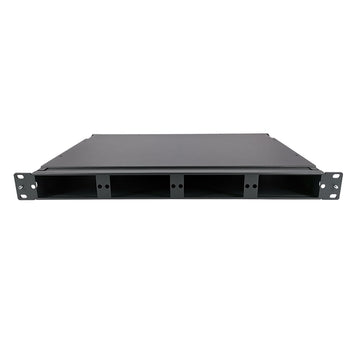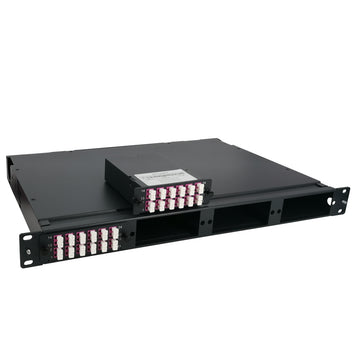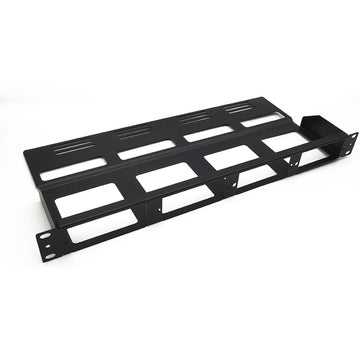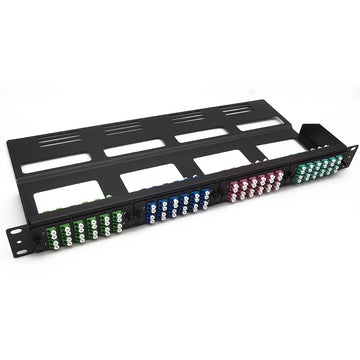LAG and LACP: How much do you know?
LAG and LACP: How much do you know?
In the 1980s, Ethernet was developed to connect local devices in a region. It was called the Local Area Network. The purpose was to transmit and receive data from different people in the area. By connecting Ethernet devices using Ethernet switches, we can now connect over a larger Ethernet network. Link aggregation is a common terminology that can describe bridging well.
What Is LAG?
To connect two switches, we use a cable to connect two physical ports (one in each of the switches) and configure them as a trunk. But a single trunk has bandwidth limitations. We can use stacking to obtain higher bandwidth, but stacking is mostly proprietary and supports a limited distance. In order to obtain high-bandwidth trunk lines between two switches (or two devices), we can use LAG – Link Aggregation Group.
LAG is a process of inter-connecting two switches with two or more links between them (or between a switch and a server), so that multiple links are combined into one bigger virtual link that can carry a higher (combined) bandwidth. All these multiple links participating in a Link Aggregation Group act like a single large (virtual) link.
If two switches support 1 GE ports, multiple ports from one switch can be connected to multiple ports in another switch to provide high-bandwidth connections (2 GE, 3 GE, etc) between the switches.
A practical situation to consider: If two switches are connected to each other with a bandwidth of 1 GE and the network administrator feels that it is insufficient, they can either buy another switch with 10 GE trunk support (hardware upgrade, more expensive) or just connect multiple ports between these two switches and configure them as a Link Aggregation Group. This approach is not only inexpensive (doesn’t require hardware upgrades), but also allows a granular upgrade of interconnect bandwidth between the two switches.
LAG is also used for increasing link reliability. Since multiple links connect two devices, even if one fails the other links keep carrying the information and the traffic on the failed link is also transferred to them. That way, loss of a single link between two switches doesn’t stop the communication between them. Multiple links participating in a LAG can also load-balance the traffic between them so that traffic is evenly distributed.
The number of links that can combine to form a larger link between two devices is generally restricted by the hardware vendor. LAG is a static protocol and needs to be configured individually for each pair of physical ports. LAG is a standard.
What Is LACP?
LACP is similar to LAG, where multiple ports/links between two switches combine to provide higher bandwidth links between them. Additionally, ports that are LACP enabled can automatically configure themselves into trunk groups, without any manual configuration/intervention.
The main purpose of LACP is to automatically add/delete individual links to the aggregate bundle, while adding new links and also after recovering from link failures. LACP can monitor to verify if all the links are connected to the right group. Basically, LACP helps automate the configuration and maintenance of LAG’s.
LACP is a dynamic protocol. It is sufficient if multiple ports on various devices are LACP enabled, once. LACP is a standard and hence LACP can be implemented between multi-vendor switches. LACP should be enabled on the trunk ports initially in order for both the participating switches/devices that support the standard, to use it. If there are more links (between two devices) than what is supported by the vendor for LACP, the additional links are placed in stand-by mode and activated automatically when a link fails.
LAG vs LACP: What’s the Difference?
- Link Aggregation Group is a practical instance of link aggregation whereas LACP is a protocol for auto-configuring and maintaining LAG.
- LAG without Link Aggregation Control Protocol is a static configuration, in which each pair of ports in a LAG require manual configuration respectively. However, LACP enabled ports are dynamic configuration, which enable to auto-configure into trunk groups when building LAG.
- When talking about LAG vs LACP, one usually refer to static LAG without LACP vs dynamic LAG with LACP. Generally speaking, dynamic LAG configuration owns advantages over static LAG configuration for automatic failover occur and mutual dynamic configuration. In static link aggregation, LAG cannot detach configuration or cabling errors so as to cause unnecessary network troubles.
Conclusion
Now, have you gotten a better picture of link aggregation, LAG and LACP? Do you put them into good use and find a network switch that is right to you? Link aggregation is a way of bundling several individual (Ethernet) links so that they can work as a single logical link. A group of ports combined together is called a link aggregation group, or LAG. The active monitoring protocol that allows devices to include or remove individual links from the LAG is called Link Aggregation Control Protocol (LACP).














